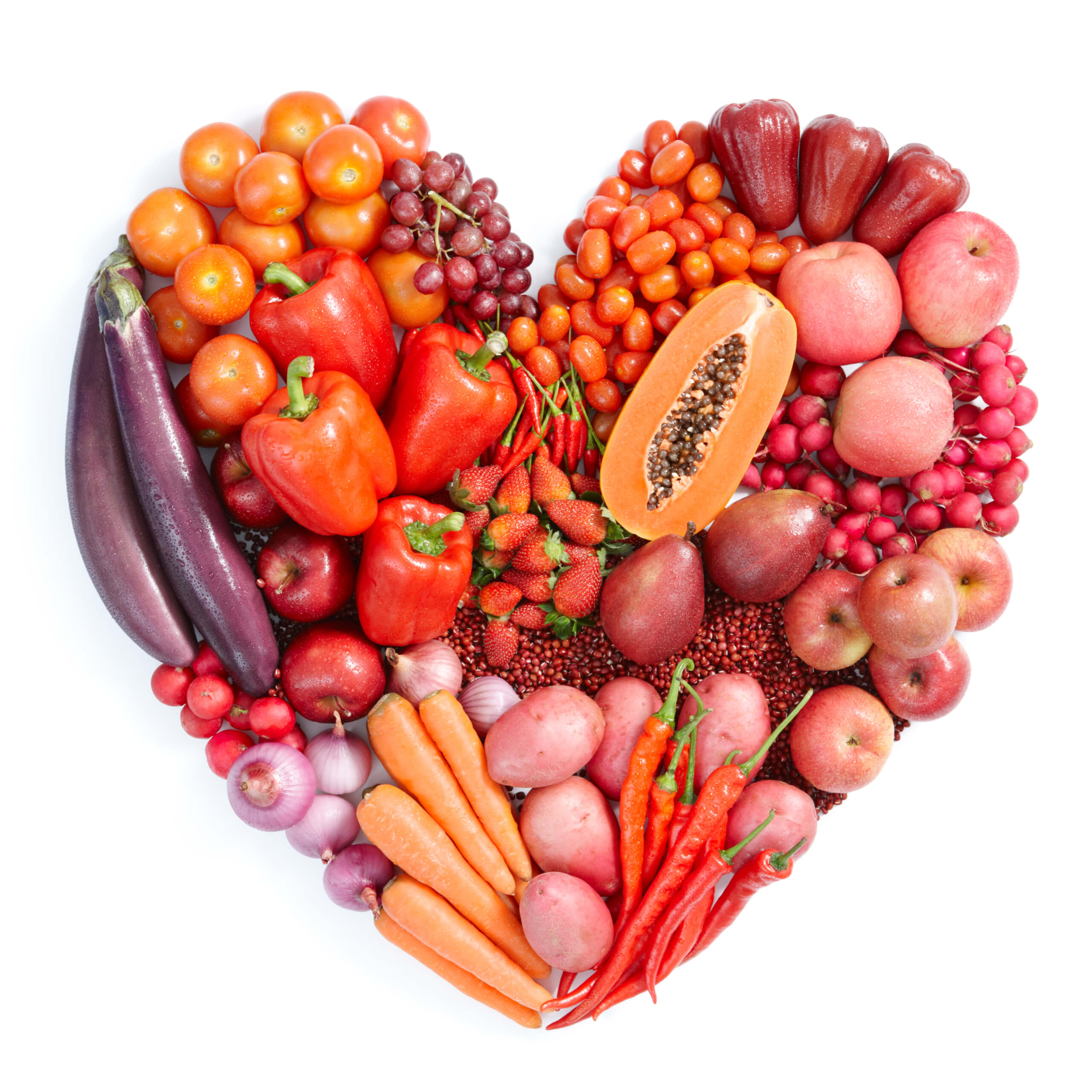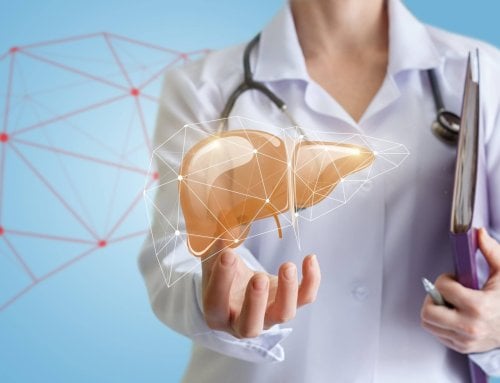Approximately 2% of adults in the US are vegans and 5% consider themselves vegetarian. New research states, “Red meat intake increases insulin resistance and the likelihood of developing type 2 diabetes”. People with diabetes always want to know “what to eat or not eat” to help control blood sugars and weight. There is no one best eating plan for people with diabetes. It has to be attractive to you so that you will actually follow it. The best advice is to come up with a reasonable plan based on your personal preference with assistance from your health care provider. Think about talking to a dietitian or Certified Diabetes Care and Education Specialist. They can guide you down a path that offers nutritional benefits.
With that said, many of you would like to know how a vegan or vegetarian eating plan can better control your blood sugars and assist in weight loss. Could this be the perfect time to try a different approach to your eating, especially if your blood sugars are still not controlled?
What exactly is vegan or vegetarian eating?
- Vegan diets exclude all dairy, eggs and animal products, even honey.
- Vegetarian diets include several variations.
- Lacto-vegetarian allows dairy products such as cheese, yogurt, and milk, but no meat or eggs.
- Lacto-ovo-vegetarian allows dairy products and eggs but no meat (most common vegetarian diet).
- Ovo-vegetarian allows eggs but no dairy or meat.
- Pescatarian-vegetarian allows fish and seafood but no eggs, dairy or meat.
- Pollotarian-vegetarian allows poultry and foul but no eggs, dairy or meat.
- Flexitarian is plant based almost entirely vegetarian but allows occasional meat, poultry, fish, eggs or dairy.
The Vegetarian Basics
Being vegetarian can be tricky when you have diabetes since eating too many carbohydrates can make blood sugars soar. Carbohydrates are a main source of vegetarian food choices. Eating sweets, fruit juice, refined carbohydrates and sweetened beverages is considered vegetarian, but not healthy – especially with diabetes. The quality of the plant-based food really matters. When you choose to be a vegetarian, deciding on the best foods and proper portion sizes becomes crucial. There is also a common myth that says “You can’t get enough protein when you are a vegetarian”. Giving up meat (a high source of protein) and foods high in saturated fats that clog up heart arteries can reduce your risk of chronic heart disease. Remember, heart attacks and heart disease are still the main cause of death when you have diabetes.
What exactly is protein?
Protein is one type of nutrient or food group that we all need for good health. Protein “is the building block of life”. It breaks down into amino acids to promote cell growth and cell repair. Included in protein foods are meat, poultry, fish, beans, peas, nuts, eggs, and seeds. Dairy has some protein, but is mostly considered a carbohydrate food.
Why do we need protein?
- Helps your body take longer to digest carbohydrates
- Boosts your immunity
- Keeps you full or satiated for a longer period of time
- Contains fewer calories per serving
- Deals with hormone function
- Assists in weight management
- Maintains regulation of your blood sugars
- Balances cell maintenance
Protein Guidelines
The general guidelines for recommended protein are 46-55 grams a day for adult females and 56-65 grams a day for adult males, depending on your current weight. Most Americans eat too much protein. As we age, we should eat more protein to help maintain muscle mass, especially when practicing weight training or resistance training. Aging bodies process protein less efficiently, and they may also eat less protein because of dental problems, changes in taste and swallowing, a smaller appetite, and changes in finances.
What happens to you from a lack of protein?
Protein deficiency is very uncommon in the US but may be seen in cancer patients, especially ones on chemotherapy, undiagnosed Crohn’s disease, and in anorexia. Too little protein can raise your risk of stress fractures and osteoporosis (bone weakening) since you need more than just calcium to keep bones strong. Without eating enough protein, your body will pull it from other organs – including your bones. A vegan or vegetarian diet consisting of highly processed and highly refined carbohydrates (like white bread, white rice, white pasta, bags and boxes of empty calorie foods such as chips, pastries, cookies and other snack foods) can lead to a protein deficiency. That’s why complete sources of protein need to be eaten several times a day. Too little dietary protein can cause thinning, brittle and splitting hair with eventual hair loss and cracking or splitting nails.
Lack of protein can make you feel weak and tired all the time. You will be cold, sluggish and exhausted. Protein is a component of hemoglobin in your red blood cells. RBC’s transport oxygen around the body and without sufficient protein intake, you can become short of breath. You may develop anemia due to a lack of iron. Since protein is the building block of antibodies, you may hurt your immune system leading to more susceptibility to colds and viruses. Without eating adequate protein, you will also stay hungry all the time.
How can I get enough protein on a vegan or vegetarian diet plan?
You may have heard “you can never get enough protein on a vegetarian diet since you rarely or never eat eggs, dairy, meat, chicken or fish”. According to The Academy of Nutrition and Dietetics, “Plant proteins can meet general protein requirements”, and as long as you are eating primarily whole foods in their natural states (not food in bags, containers or boxes) you will be able to get enough protein. Vegetarians eat 50-100% more fiber than other diet plans, which is also excellent for improved diabetes control and weight loss.
Which foods can give me adequate protein on a vegetarian diet?
- Legumes are a class of vegetables that include lentils, peas, split peas, chickpeas, beans and peanuts. The beans included in legumes are navy, black, red, kidney, pinto, cannellini, northern, and lima. They contain 26 grams of plant protein per cup. Lentils come in both the red and green variety. Legumes are low in fat and cholesterol, a good source of protein, combat inflammation, are high in soluble and insoluble fiber, full of antioxidants, and contain high amounts of potassium, magnesium and iron. The protein in a cup of peas is the same as the amount in a cup of milk. Legumes help keep blood sugars down and take a while to digest. These foods can be purchased in cans, fresh (soak overnight), or frozen at reasonable prices. When properly sealed, you can safely store them for a long time.
- Quinoa (and other whole grains). Quinoa is thought of as a grain, but is really a seed with 8 grams of protein and 5 grams of fiber per cup. It is one of the few plant proteins considered “a complete protein since it contains all 9 essential amino acids”. It is rich in magnesium, phosphorus and folate. There are over 120 varieties of quinoa. Quinoa can be eaten as a whole grain breakfast cereal, added to soups or salads, as a side dish or as a main dish replacing white rice or pasta. Other whole grains which are high in protein and fiber are amaranth, spelt, teff, kamut, couscous, millet, oatmeal, buckwheat, cornmeal and sorghum. Wild rice has 1.5 times more protein than white Basmati or brown rice. Make sure that you rinse rice to remove traces of possible arsenic. Although all these power grains are high in protein, you need to eat them in portion size since they are still considered carbohydrate foods, which can raise blood sugars and add weight if eaten in large amounts.
- Soybeans have been eaten for thousands of years and are an excellent source of protein with 30-40 grams per cup. They contain antioxidants, phytonutrients, vitamin K, copper and manganese. You can eat them mashed up or as whole pods called Edamame (immature soybeans in the pod). They can be eaten as a snack, added to salads, soups or with whole grain pasta. Tofu and tempeh (nutty taste) are forms of soybeans that take on the flavor of the sauces and spices they are cooked in. Tofu comes in a solid block and can be cut into cubes or crumbled into a stir-fry mixed with grains and vegetables. Soybeans are a complete source of protein with all 9 amino acids. Soy is also made into a plant milk and is an excellent source of protein. Drink soy milk in the unsweetened variety.
- Leafy greens/vegetables. Although not usually known for their protein content, there are certain vegetables that contain more protein than others. These include spinach, broccoli, asparagus, Brussel sprouts, artichokes, and sweet potatoes. These foods contain about 5 grams of protein per cup. Eat them as a snack, put them into soups or casseroles or use them as side dishes.
- Fruits contain less protein than vegetables, but the ones with the highest protein content are bananas, blackberries and nectarines, with about 4 grams per cup. Remember, fruits are higher in sugar than vegetables and should be eaten in smaller portion sizes.
- Seeds are a great source of plant-based protein and contain lignans. They are known for their high nutritional value with added vitamin and mineral content including zinc, selenium, B vitamins and Omega-3s. Eating seeds are also known to assist in weight management. Just 3 tablespoons of hemp seeds offer 10 grams of protein. Just 2 tablespoons of chia seeds have 6 grams of protein, with lots of fiber. Sesame, sunflower, flax, pumpkin and poppy seeds are all good sources of plant protein with antioxidants and Omega-3s. They can be added to non-dairy yogurt, mixed into cereals, as salad toppings, as a garnish, in pesto sauce, puddings, dips, breads or eaten simply as a snack.
- Unsweetened cocoa powder (70% or higher cocoa). With a delicious rich deep chocolate flavor, unsweetened cocoa powder is full of polyphenols and antioxidants. Cocoa flavanols “may slow carbohydrate digestion in the gut and improve insulin secretion”. Cocoa is high in theobromine, an anti-inflammatory. It is low in fat and sugar and can improve your memory and give your immune system a boost. Cocoa contains iron, zinc, magnesium and selenium. A tablespoon of unsweetened cocoa powder has a gram of plant protein. You can add it to coffee, non-dairy plant milk or non-dairy yogurt.
- Unsweetened plant-based milks and plant-based yogurts. Plant based milks are cholesterol free and lactose free. Besides the popular soy milk, you can drink hemp, oat, rice, almond, pea, coconut and cashew milk, in the unsweetened variety. Read all labels since many plant-based milks have added sugars and other undesirable ingredients. Plant-based milks are higher in fiber than dairy milk. Each type varies in the amount of protein as well as the nutritional content. They all contain calcium and vitamin D. Soy, pea, cashew and hemp milks contain the most protein. Plant based Greek yogurts contain 14 grams of protein per cup. Plant based yogurts come in soy, almond, coconut and cashew. You can eat them with seeds, nuts or add berries for a great mini meal.
- Nuts and nut butters. Tree nuts such as walnuts, cashews, pistachios, and almonds are high in good fats, are nutrient dense, and contain about 6 grams of protein per ounce. Other nuts to add to you eating plan are pecans, Brazil nuts, pine nuts, hazel nuts, and macadamia nuts. Nut butters contain 6 grams of protein in each serving (2 tablespoons). Nuts are low in carbohydrates but high in calories and fat, so they must be eaten in small portions. They can be chopped and added into breads or eaten as a snack. Try to eat raw or dry roasted, unsalted nuts for the best nutritional results. You can also substitute nut flour for baking.
- Plant based protein powders. Always choose the unsweetened varieties when you have diabetes. Look for the kinds without artificial ingredients. Whey, pea, and almond plant protein powders contain 20 grams of protein per ¼ cup. You can add it to unsweetened plant-based milk, into waffles, pancakes and puddings.
- Nutritional yeast is a “vegan staple”, and contains 14 grams of protein per ounce, has 20 calories per spoonful, contains zinc, copper, manganese, and even has vitamin B12 – which vegan diets usually lack. It looks like Parmesan cheese, comes in a shaker and has a cheese flavor even though it is dairy free. It is “deactivated yeast” fortified with vitamins and minerals. The flavor comes from glutamic acid which gives it a savory taste. You can sprinkle it on popcorn, salads, casseroles and soups.
- Plant-based burgers and nuggets. Some meat substitutes contain high amounts of carbohydrates as well as sodium, so read the labels carefully. They are saturated and trans-fat free, and have fewer calories than beef burgers. There are veggie protein burgers, black bean burgers, and pea protein burgers. Some have added sugars and chemical aftertastes so trying a few different brands is a wise decision. Newer ones on the market seem to have rave reviews. They can be eaten as burgers, nuggets, crumbles or in wraps.
When going vegetarian, besides protein, what else do I need to eat?
You need to count carbohydrates (another food group) which you will get from your fruits, starchy vegetables, whole grains, and non-dairy milks and yogurts. You need to add healthy fats for Omega-3’s including:
- Olive oil
- Olives
- Tahini
- Dark chocolate
- Avocadoes
- Plant based mayonnaise
- Plant based margarine
What are some good diabetes friendly vegetarian snacks?
Look for snacks that are savory, crunchy or sweet to ward off hunger and cravings. Snacks should contain only 15 grams (one serving) of a carbohydrate.
Crunchy
- Popcorn. 3 cups topped with a tablespoon of nutritional yeast.
- Roasted chickpeas. Place canned/drained chickpeas in a roasting pan. Mix with a tablespoon of olive oil, cumin, garlic powder and coriander. Roast 30-45 minutes at 350 degrees.
- Almonds. Dusted in unsweetened cocoa powder.
- Wasabi peas. Crunchy and spicy like chips but without the grease and saturated fat. They contain 7 grams of protein in a half cup.
- Raw vegetable sticks. Dipped in hummus, tomato salsa or guacamole.
- Seeded whole grain crackers. Easy to find, high in flavor and healthy carbohydrates. Spread with tahini, hummus or nut butter.
Savory
- Date, fig or prune. Stuffed with an almond.
- Sour pickle.
- Fruit or vegetable kabob. Fruit or veggies cut in cubes and threaded on a kebob stick.
- Apple slices or celery sticks. Add nut butter.
- Spicy pumpkin seeds. Roasted with cumin, garlic, paprika and olive oil.
- Chia seed pudding. Self-made or store bought.
- Avocado. Spread on whole grain bread.
- Pitted olives. Stuff them with vegan cheese.
Sweet
- Edamame. Eaten directly from the pod, hot or cold.
- Dark chocolate square.
- Homemade trail mix. Combine a handful of raw or roasted nuts, seeds, cocoa nibs and raisins.
- Frozen grapes.
- Half a frozen banana.
- Energy bites. Roll oats and seeds in peanut butter and let harden on parchment paper.
- Plant based Greek yogurt. Add in chopped almonds and cocoa nibs.
If you go vegetarian, what happens to your body?
Your body reacts in many wonderful ways. The increase in fiber makes you feel full faster, and longer. By removing red meat high in saturated fats, you will lower your levels of insulin resistance and systemic inflammation. This will decrease your chance of developing hypertension, high cholesterol, diabetes, obesity, and heart disease. Your kidney function may improve if you have diabetes. Gut health may improve from boosting healthy gut bacteria. Your chance of developing cancer decreases by 40%. You may even save money because lentils, grains, seeds and nuts are cheaper than beef, pork and lamb.
You will be helping the environment by lowering the need for carbon and greenhouse emissions. Less land is needed to grow vegetables and fruits compared to the land needed for livestock grazing. You may lose an average of 10 pounds when going vegetarian. Your risk of colon and prostate cancer goes way down. You may even live longer since 70,000 adult vegetarians, “outlived meat eaters”.
What are some possible concerns of being a vegetarian?
- Missing nutrients – especially vitamin B12, zinc, and vitamin D3. However, you can easily take a supplement.
- Eating too many highly processed and refined carbohydrates, which is especially dangerous with diabetes for blood sugars and weight gain.
- Eating too many high-quality carbohydrates. Even healthy whole grains which can raise blood sugars and weight.
- Experiencing low blood sugars – especially when on insulin – from not eating enough carbohydrates.
In summary
Eating a vegan or vegetarian diet plan may be helpful to control your blood sugars, diabetes and for weight loss. Whether you do it completely or modify a vegetarian eating plan is up to you and your health care provider. Make sure you understand you still need to include protein, healthy carbohydrates and fats, as well as certain vitamins and minerals. You still should count carbohydrates since a vegetarian diet tends to be high in carbohydrates. Make sure to add a complete protein source at each meal and never skip meals. Try to eat every 4-5 hours to keep blood sugars stable.
With portion control and wise choices, chances are you will lose weight and get your blood sugars down. More stores and restaurants offer vegan and vegetarian options. Continue to monitor blood sugars so you can see how this eating plan affects you. You may also want to add calcium, vitamin D, zinc and vitamin B12 supplements. Combined with an exercise program and stress management, you should be on your way to a wonderful change into a healthier lifestyle!













Leave A Comment